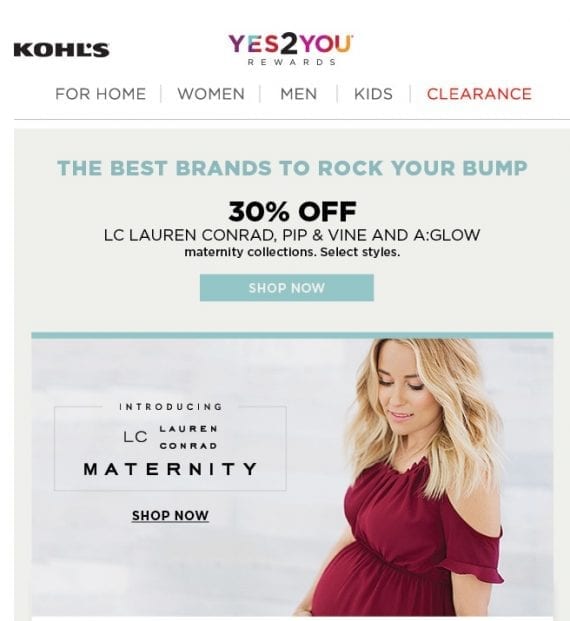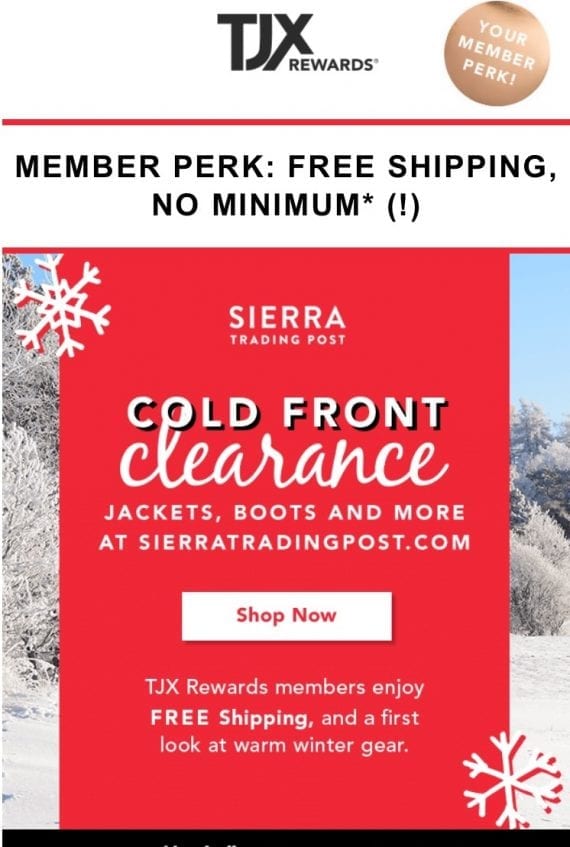Personalizing an email marketing program can greatly increase opens and clicks. But a quick look at my inbox reveals that very few retailers are doing it effectively.
Much of the success of any marketing effort can be boiled down to making the message relevant to individuals. In this post, I’ll review four common methods to personalize email, to encourage conversions.
Demographics
Tailoring the look and feel of your emails to major demographic cohorts can increase response rates. The most basic methods are age and gender.
For example, show male clothing to males and female clothing to females. Also, align products and styles based on age groups.

Males would likely not respond to this email from Kohl’s promoting maternity clothing. However, it could appeal to women ages 20 to 40.
Adding a unique element to the subject line or preheader will typically increase open rates. For example, referencing a local event or a recent news item could prompt the recipient to open.

This promotion by the T.J. Maxx rewards program offers winter gear from Sierra Trading Post. It appeals to recipients that are experiencing cold weather. It likely would not appeal to recipients in warmer areas.
Purchase History
Focusing on the type of products that individuals have purchased goes beyond demographic data. Individuals that share similar demographic attributes are not necessarily interested in the same products.
Reportedly, Kohl’s found that customers who have purchased children’s items respond more to kid-focused emails. Kohl’s experienced a sales lift in children’s merchandise when it focused its email program on purchased history.
When basing content on purchases, consider highlighting the brand, type of product, or general category. For example, if an individual has purchased only diamond necklaces, it could be a mistake to promote only diamond rings to that person.
Multiple Data Points
Purchase history can tell us a good deal about a customer. But it is not a foolproof. Purchases that are gifts, for example, will have no correlation to future buys.
Thus a combination of demographic information, behavior, and past purchases may help predict future activity. Tailoring content for all of those data points is the key to optimizing email personalization.
Timing
Individuals have different email routines. Some may look at their inbox several times an hour. Others may wait until the end of the day. Sending emails to recipients when they are most likely to open will encourage sales.
But it can be difficult to know when an individual will likely read an email. Some email service providers offer tools that analyze when subscribers’ interact with emails and adjust the send time accordingly. For example, The Wall Street Journal reported that JustFab, a women’s fashion retailer, experienced a 40-percent increase in first-time purchases after customizing email delivery times.
Similarly, quick auto-responses to a recipient’s site behavior — such as abandoning a cart or browsing specific categories — can earn the sale.
